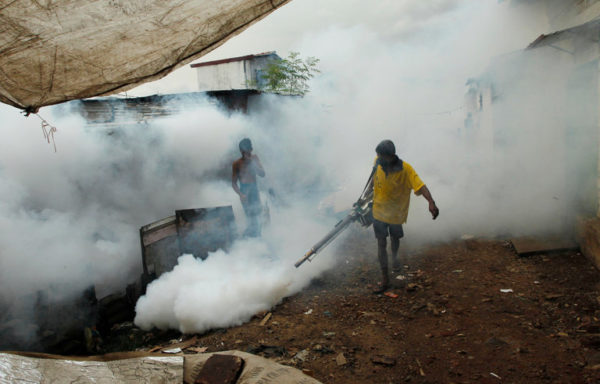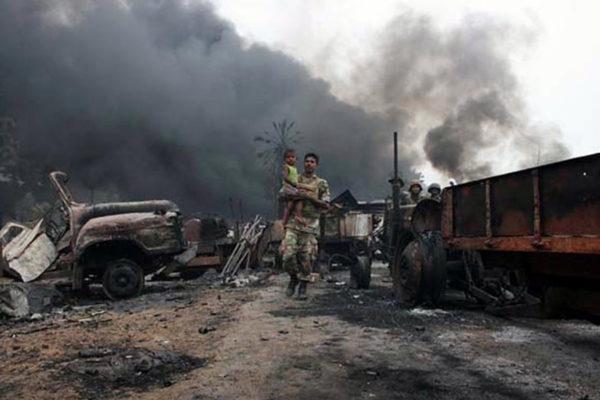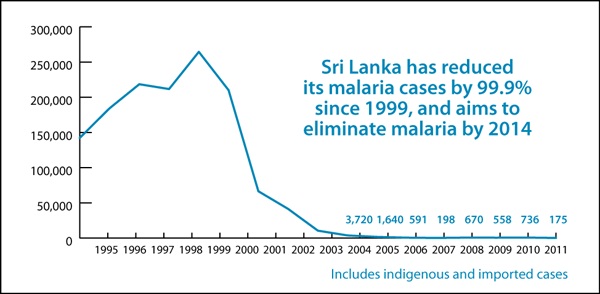
This story might not be relevant to the developed world. However, to those who are concerned, and are following proceedings in the developing world, it is a major achievement.
In many developing countries, the health sector is weak and under-funded. This ensures that avoidable diseases ravage majority of the population.
According to statistics from the World Health Organization (WHO), about 3.2 billion people – nearly half of the world’s population are at risk of malaria. In 2015, there were roughly 214 million malaria cases and an estimated 438 000 malaria deaths across the world.
The WHO claims increased prevention and control measures have led to a 60% reduction in malaria mortality rates globally since 2000. Sub-Saharan Africa continues to carry a disproportionately high share of the global malaria burden. In 2015, the region was home to 89% of malaria cases and 91% of malaria deaths.
But apart from Sub-Sahara Africa, elsewhere in the developing world, malaria is still a burden to governments. Sri Lanka is an island nation south of India, located in the Indian Ocean.
In early September 2016, the WHO declared Sri Lanka free of malaria. In fact, it has been more than three years since the last malaria case was recorded in the country. It was not easy for the country to achieve this feat.
According to how Sri Lanka was able to completely eradicate the disease, the country started the eradication campaign long ago. In the 1940s when Sri Lanka was still under British rule, the country routinely had a million cases of malaria a year. Then, officials began an intensive public health campaign, relying on DDT to kill mosquitoes and chloroquine to cure the disease.
Finally when the country was granted independence in 1948, the malaria campaign continued. Officials devoted a considerable attention to the campaign. By 1963, the annual caseload of malaria had fallen to only 17 across the island. The campaign had paid off. The country’s officials and citizens were happy.
However, things fell apart all of a sudden after the 1960s. A brutal civil war destroyed all the progress made. The country’s ethnic fabric disintegrated. Below is what destroyed the malaria progress.
After independence was granted by the British, the majority Buddhist Sinhalese began discriminating against the Hindu Tamils, whom the British had favored during the colonial period.
Immediately after Independence, the majority Buddhist Sinhalese who gained control of the country began repressing the Tamils due to their past links with the British. A controversial citizenship law was passed by the country’s parliament, which deliberately discriminated against the Tamils. The law prevented many of the Tamils, who are of Indian decent to obtain citizenship in the country. Approximately over 700,000 Tamils were made stateless. Over the next three decades, more than 300,000 Indian Tamils were deported back to India. This chaos led to an ethnic armed conflict. The Tamil rebels became known as the Tamil Tigers. Many were killed during the war. Properties and infrastructures were damaged.
Since there was war in the country, all attention was paid to it. Many developmental projects came to a halt. The campaign against malaria therefore stopped. This gave the disease the chance to bounce back in the country.
In 2000s when the war was subsiding, outside rebel-controlled areas in the northeast of the country, malaria cases began dropping. The government, with donor help had deployed a mix of indoor spraying, bed nets, rapid diagnostic kits and medicines that combined artemisinin, an effective treatment with other drugs. In 2009, the war came to an end, and the government was able to assert its control over the country.
The government also screened blood samples drawn for any reason in public clinics and hospitals for malaria infection, and officials established a nationwide electronic case-reporting system. In war-torn areas, the disease retreated more slowly.
Mobile clinics were set up near displaced camps, as well as at airports and ferry landings to deal with malaria cases. Today, the whole of Sri Lanka is malaria-free. The government is now trying to prevent malaria from being imported into the country.
“This is a big success story. And it’s an example for other countries”, WHO’s Director of Global Malaria Program, Dr Pedro L. Alonso said.
You want to support Anonymous Independent & Investigative News? Please, follow us on Twitter: Follow @AnonymousNewsHQ
This Article (WHO Predicts Up To 4 Million People To Be Infected With Zika Virus In The Americas By The End Of 2016) is free and open source. You have permission to republish this article under a Creative Commons license with attribution to the author and AnonHQ.com










Yeah right!! With the end of the civil war which lasted over 20 years while being monitored by the UN and the help of “a donor” Malaria has been eradicated by the Senegalese government.
Wonder who the donor was who helped out to eradicate mosquito’s with an approved UN insecticide?